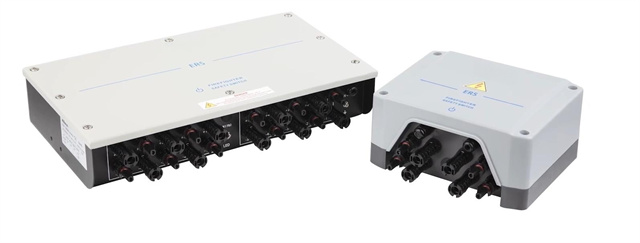Author:BLD Solar Energy SystemFROM:Solar System Converter Manufacturer TIME:2023-08-18
The rapid growth of the solar industry in recent years has brought about significant advances in photovoltaic technology. One area that has seen particular progress is rapid shut down technology. This innovative technology has revolutionized the way solar systems are designed and installed, ensuring safety and efficiency throughout the life cycle of a solar installation.

Rapid shut down technology plays a crucial role in enhancing the safety of solar systems. In the event of an emergency, such as a fire or severe weather, it is essential to quickly de-energize the system to minimize the risk of electrocution for first responders and maintenance personnel. Traditional solar systems have relied on manual switches or disconnects located at the main service panel, which can be time-consuming and potentially dangerous. With rapid shut down technology, these switches are integrated into each individual solar panel, allowing for rapid and automatic shutdown of the entire system with just a single command. This ensures that firefighters and other emergency personnel can work safely around a solar installation without the risk of live electrical currents.

In addition to enhancing safety, rapid shut down technology also improves the performance of solar systems. By shutting down the system rapidly and efficiently, it helps to prevent damage to the system during unforeseen events, such as lightning strikes or electrical surges. This technology also allows for better control and monitoring of the system, enabling more precise fault detection and troubleshooting. With the ability to pinpoint any issues and address them promptly, system downtime is minimized, resulting in increased energy production and overall system efficiency.

Rapid shut down technology is not only beneficial in terms of safety and performance but also essential for compliance with regulatory requirements. Many countries and jurisdictions have implemented specific codes and standards mandating the use of rapid shut down technology in solar installations. By adhering to these regulations, solar system installers can ensure that their projects are in line with industry best practices and meet the necessary safety standards. Moreover, by incorporating rapid shut down technology into their designs, installers can avoid potential legal issues or delays in obtaining permits and certifications.
In conclusion, rapid shut down technology has emerged as a vital component of the solar industry. It enhances the safety of solar systems by allowing for rapid de-energization in emergency situations, improves system performance through effective fault detection and troubleshooting, and ensures compliance with regulatory requirements. As the solar industry continues to grow and evolve, the further development and implementation of rapid shut down technology will be critical in driving the industry forward, making solar energy safer, more efficient, and more reliable than ever before.
